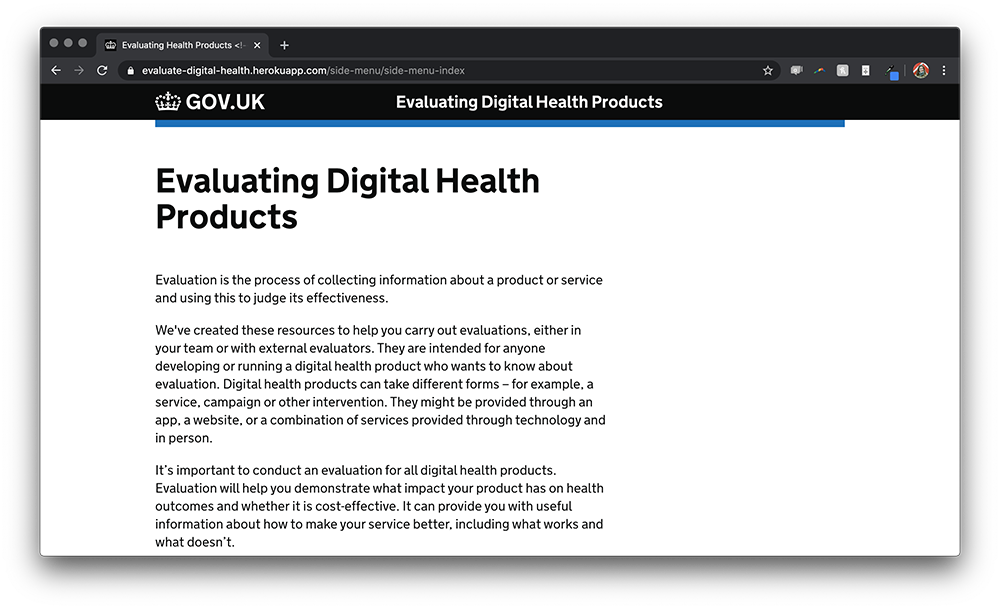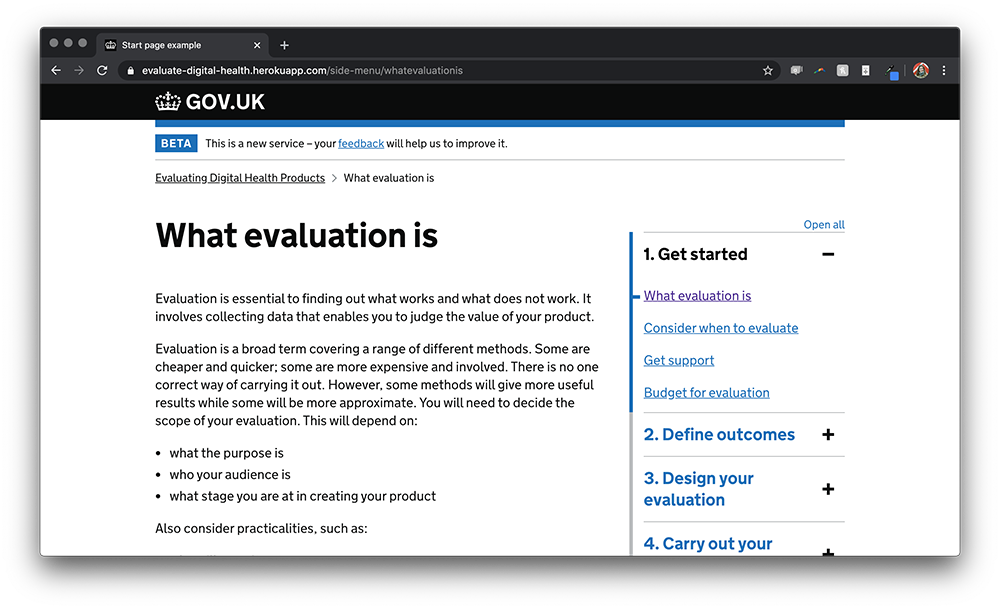Public Health England
Evaluating digital health products

Challenge
There are now over 318,000 health apps available on the top app stories worldwide – with more than 200 apps being added each day (IQVIA, 2017). Public Health England recognised that cross the health sector there are lots of digital health products being developed, but we have little knowledge of whether they achieve their intended health outcomes. I’ve been working as the lead service and interaction designer in an agile, multidisciplinary team to design a service that supports digital teams to better evaluate their products.
Personas
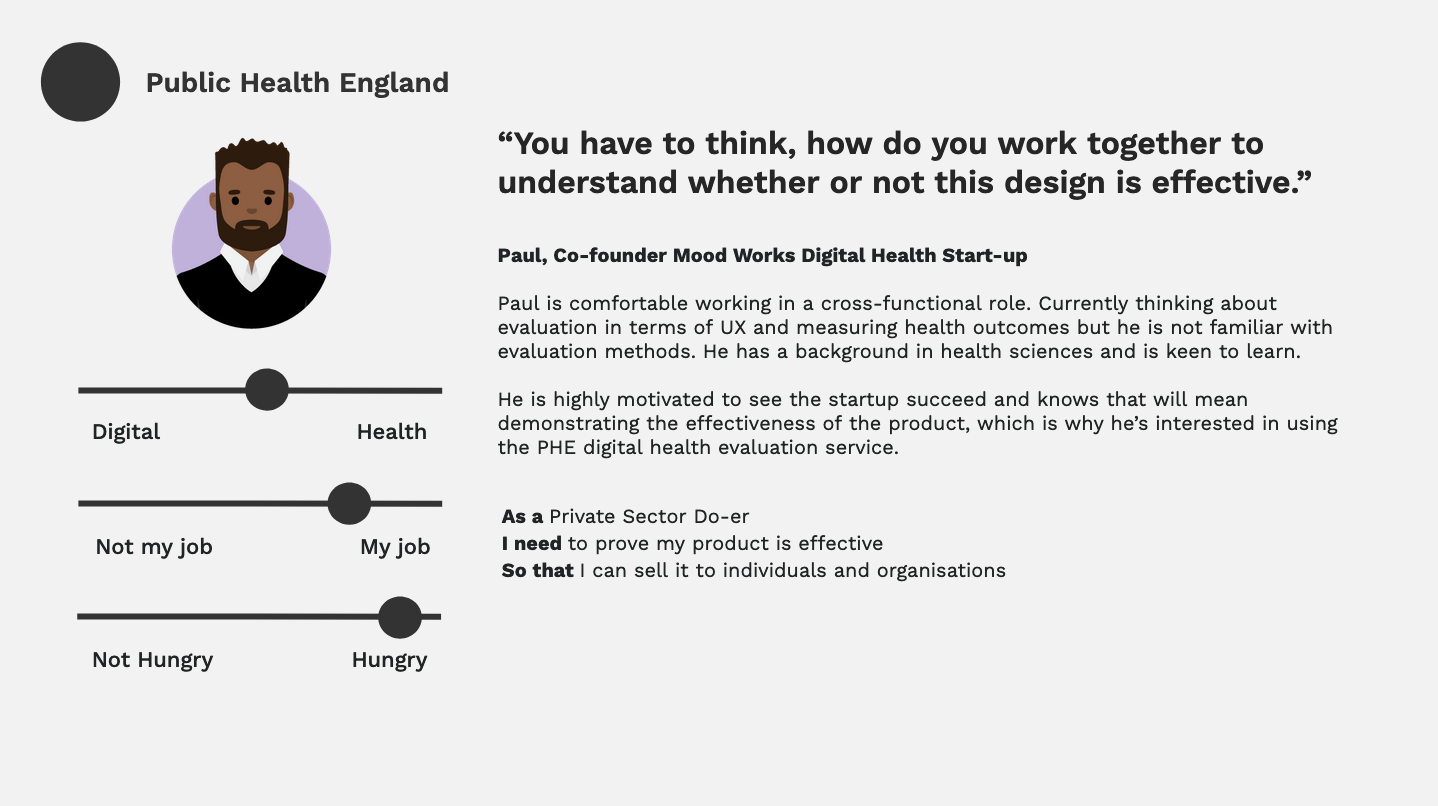

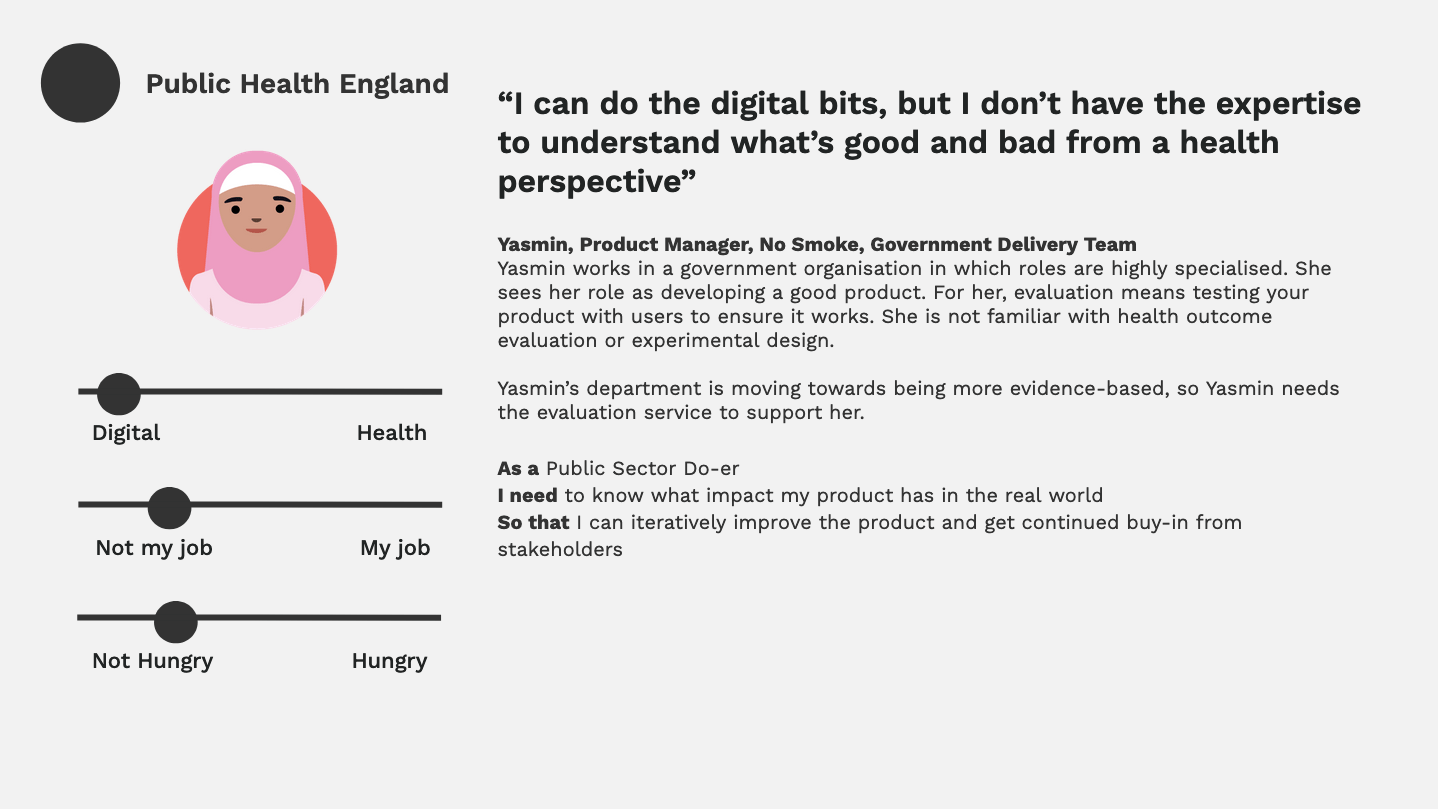
We developed 3 personas to understand the user needs of people who would use the Public Health England Evaluation Service. There were 3 main stakeholders: founders of start ups who understood how to create compelling digital health products, but didn't necessarily have a health evaluation background. Product managers who worked within central and local government delivering digital products. Public health consultants who would be involved in evaluation, but not necessarily have a background in digital. We undstood each of these people would have different needs and ways of interacting with the service.
Solution
We identified that teams may not have the expertise to carry out evaluation. As well as this, they may not have the support and the organisational culture they need to evaluate their products. To address this, we designed an evaluation service which includes an evaluation guide, training and a community to share knowledge and ask questions.

Easy to Run Training
In collaboration with evaluation experts I created an evaluation training package, so that an evaluation novice can: learn about evaluation and carry out activities be better informed to commission evaluation Many teams participated in the evaluation training, their feedback allowed us to iterate the training. This way the training is understandable to users and ensures they learn the evaluation basics.
An Accessible Evaluation Guide
The guide gives step-by-step instructions on how to carry out evaluation. I designed a coded a prototype to test the guide. A content designer and evaluation expert were brought on board to create the guide’s content. We carried out 6 rounds of usability testing to make the guide intuitive to people who are new to evaluation. Our accessibility audit and testing ensured that people with a variety of access needs can use it.
Information Architecture of Guide
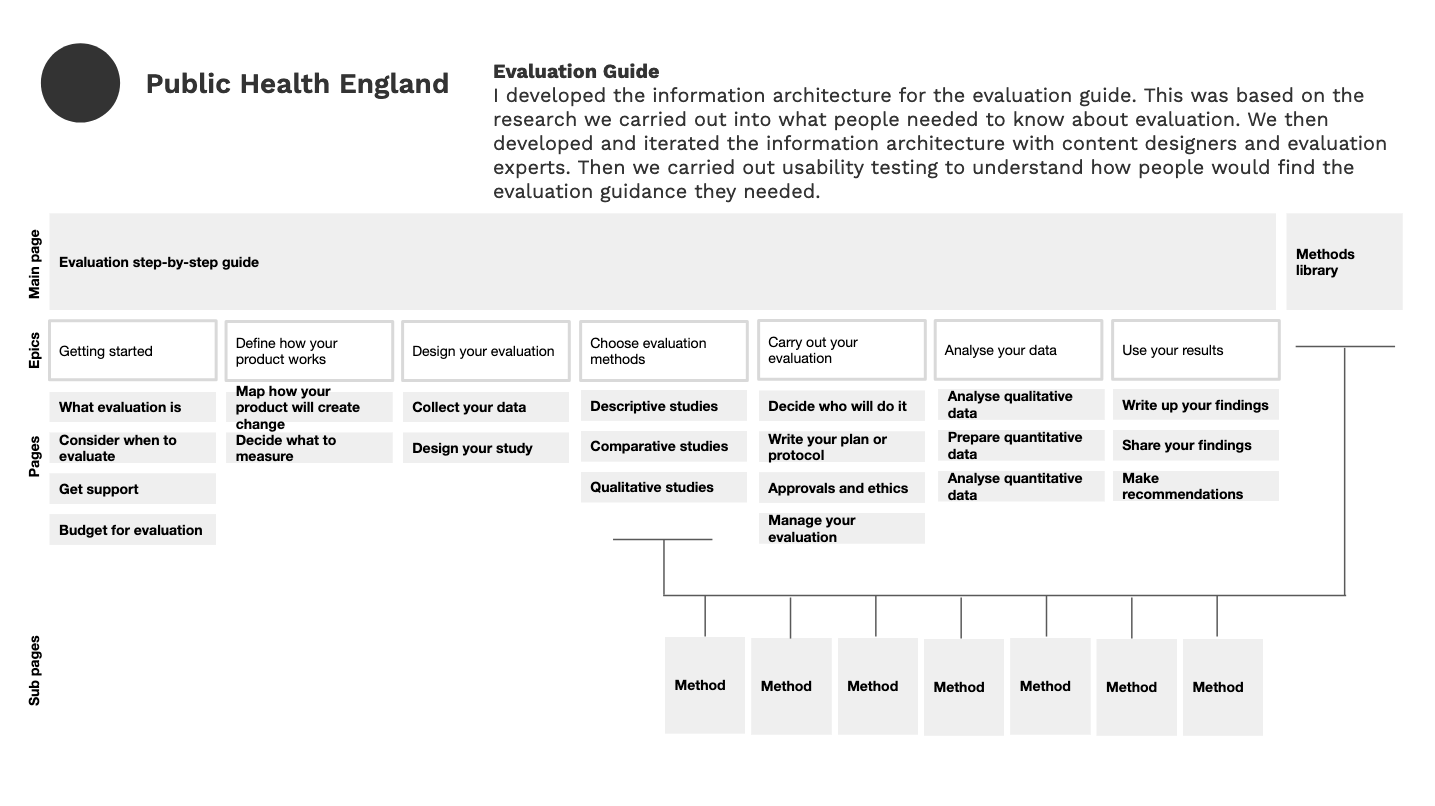
This shows how the evaluation guide worked. Because there is a lot of content on the guide, I spent time understanding how people would move through the site. We carried out usability testing to hone this.
Evaluation Methods Library
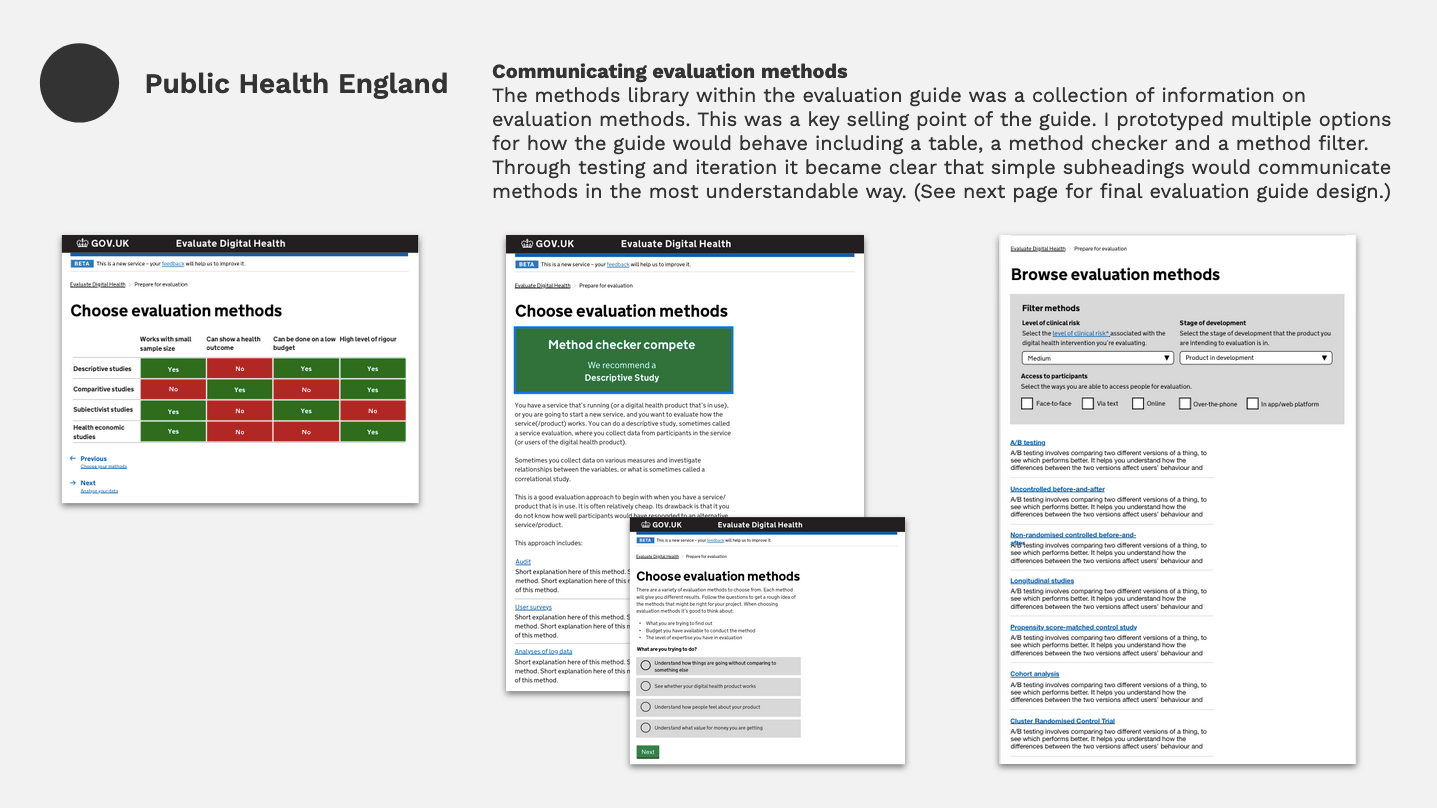
Evaluation methods are one of the most important parts of the guide. I prototyped multiple versions of the evaluation methods library. I then spent time with the team gaining feedback on which design worked best.
Menu Design
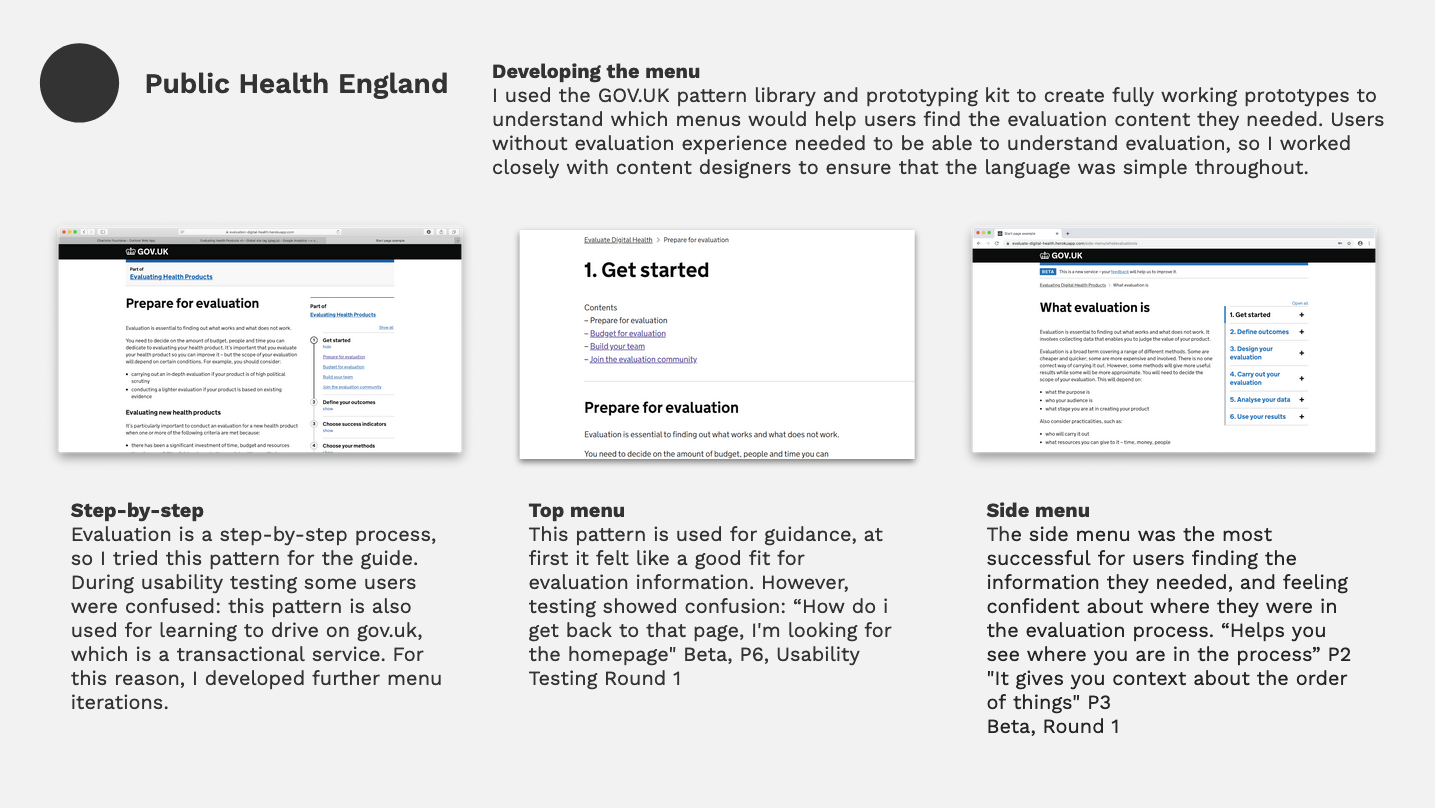
I developed multiple options for the evaluation menu design, and tested them all with users.
Service Blueprint
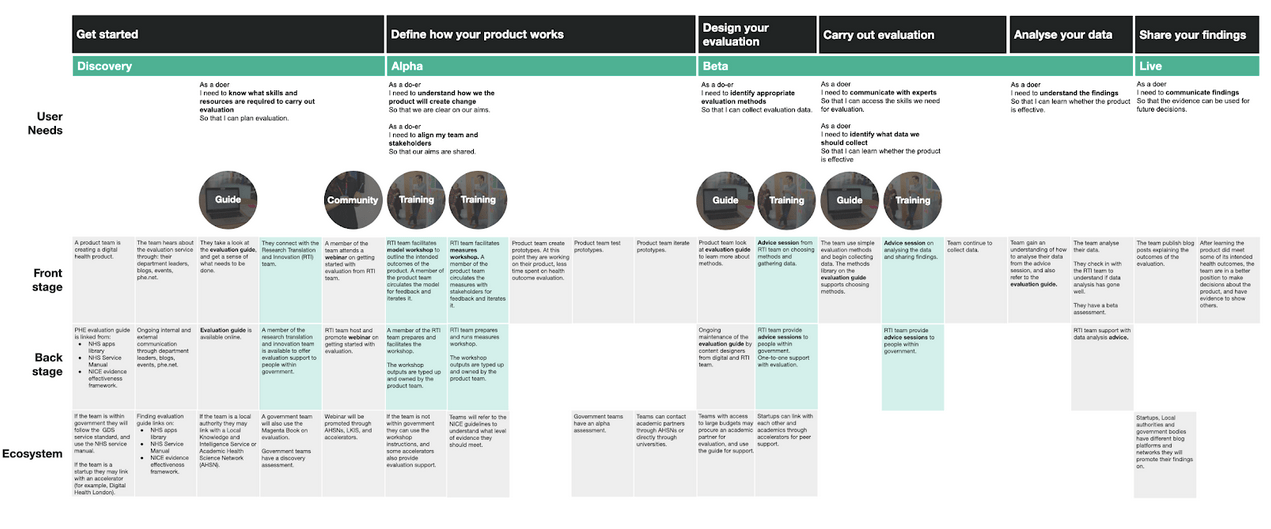
This shows how the different parts of the evaluation service can be used at different points in a teams journey. We advise that a team creates a logic model early on, in order to understand their intended health impact and collect the right data.
Team
Product Manager: Hasan Ali
Content Designer: Flora Death
Service and Interaction Designer: Charlotte Fountaine
Service Owner: Kassandra Karpathakis
Delivery Managers: Rosmari Mitova, Bobak Sadaat
Evaluation Expert: Henry Potts
User Researcher: Anya Zeitlin
Impact
The evaluation guide is available to all on GOV.UK. The training has been run with 15 teams across the health sector, with a positive response. This was one of the first digital products to be delivered at Public Health England Digital, trailblazing the use of design in the department.
